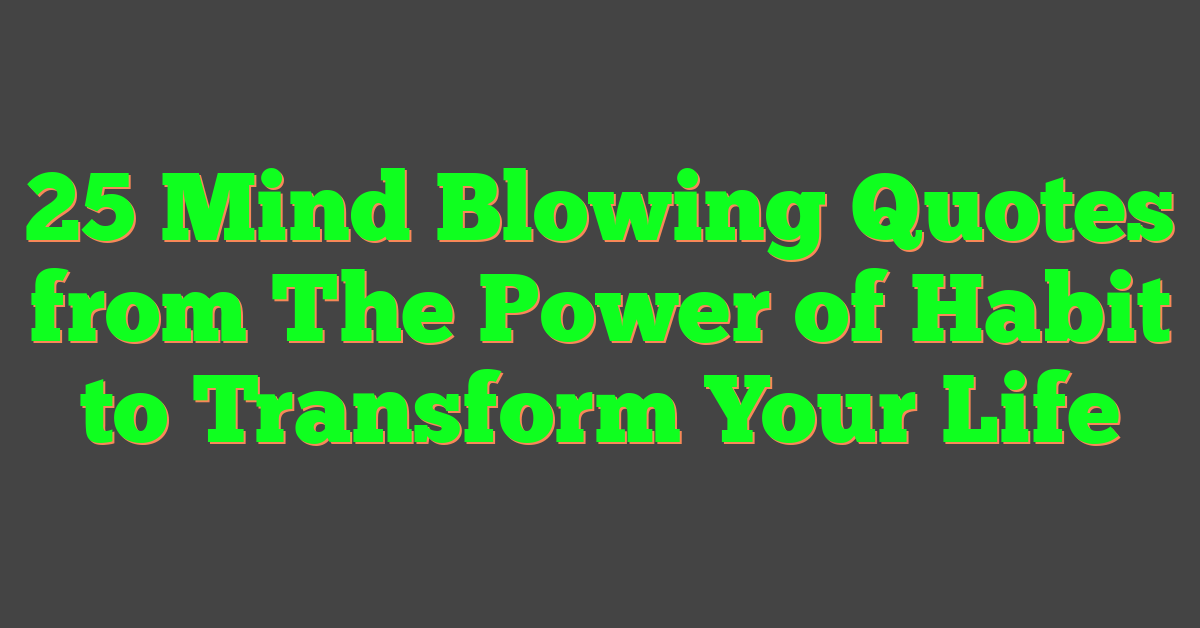Many people wonder who is behind the mobile network they use every day. If you’re an EE customer, you might be curious about who controls this popular UK service.
EE is owned by BT Group. BT acquired the telecommunications company for £12.5 billion in 2016.

EE wasn’t always part of BT. The company was originally formed in 2012 through a merger between Orange and another mobile provider.
Since its acquisition, EE has become a key part of BT’s business strategy. In fact, BT has been working to make EE its main consumer-facing brand for telecommunications services.
Today, EE continues to run the UK’s biggest and fastest mobile network, offering extensive 4G coverage. The company maintains its headquarters in London with additional hubs in Bristol, while operating as a consumer division within the larger BT Group structure.
History of EE
EE has undergone significant changes since its formation, evolving from a joint venture between two major telecom companies to becoming part of the BT Group. The company’s journey reflects important shifts in the UK telecommunications landscape.
Formation and Growth
EE was formed in 2010 as a joint venture between Deutsche Telekom’s T-Mobile UK and Orange UK. The new company initially operated both the Orange and T-Mobile brands side by side.
In 2012, the company officially launched the EE brand (standing for “Everything Everywhere”) and became the UK’s first mobile network to offer 4G services. This gave EE a significant advantage in the competitive UK mobile market.
During its early years, EE focused on expanding its network coverage and improving service quality. The company quickly established itself as the UK’s biggest and fastest mobile network, offering better connectivity than its competitors.
By 2015, EE decided to phase out the Orange brand, consolidating its services under the EE name.
Acquisition by BT Group
In 2016, BT Group officially acquired EE, creating the UK’s biggest telecommunications company. The £12.5 billion deal marked a significant moment in the UK telecom industry.
Despite the acquisition, BT made the strategic decision to keep the EE brand rather than folding it into the parent company’s identity. This allowed EE to maintain its strong market position and brand recognition.
Following the acquisition, EE’s original parent companies, Deutsche Telekom and Orange S.A., didn’t completely exit the picture. They continued to hold stakes in BT Group, maintaining some connection to their former joint venture.
EE’s headquarters were established in Hatfield, with main offices located in London. The company continued to operate as a distinct entity within the larger BT family.
Understanding EE’s Ownership Structure

EE, a major telecommunications company in the UK, operates under the ownership of BT Group following an acquisition in 2016. This change transformed EE from an independent entity into a consumer division within BT’s broader corporate structure.
Stakeholders and Corporate Governance
EE’s main stakeholder is BT Group, which fully owns the company since the 2016 acquisition. Before this buyout, EE was a joint venture between Deutsche Telekom and Orange S.A. (formerly France Télécom).
The company maintains its distinct brand identity despite being fully owned by BT. EE has established its headquarters in London, with additional operational hubs in Bristol and other UK locations.
In terms of governance, EE follows BT Group’s corporate leadership structure. The executive team manages day-to-day operations while adhering to BT’s overall strategic direction and business objectives.
This ownership arrangement gives EE stability while allowing it to leverage BT’s resources and network infrastructure.
BT Group’s Role
When BT acquired EE in 2016, it represented one of the UK’s most significant telecommunications mergers. BT paid £12.5 billion for EE, making it a wholly-owned subsidiary and a key consumer division within the group.
This acquisition gave BT several strategic advantages:
- Access to EE’s extensive 4G mobile network
- Ability to offer “quad-play” services (mobile, broadband, TV, and landline)
- Enhanced competitive position against rivals like Virgin Media and Sky
BT maintains EE as a separate brand within its portfolio, recognizing the strong brand recognition EE enjoys among UK consumers. This approach allows EE to continue its customer-focused mobile services while benefiting from BT’s broader resources.
BT has integrated some operations while allowing EE to maintain its unique market position and customer base.
Products and Services Offered by EE

EE has grown from a mobile network operator to offer a wide range of digital products and services. The company continues to expand its offerings beyond telecommunications into smart technology and home services.
Mobile Networks and Broadband
EE is known as the UK’s No. 1 network with both superfast 5G and 4G coverage. Their mobile services include pay monthly contracts, SIM-only deals, and pay-as-you-go options for smartphones and tablets.
For home internet, EE provides fiber broadband with various speeds to meet different household needs. These broadband packages often come with special offers for existing mobile customers, creating a connected ecosystem.
In recent years, EE has enhanced its network reliability and speed, making it a popular choice for those who need dependable connectivity for work or entertainment. Their mobile plans frequently include extras like data rollover and free access to streaming services.
BT Broadband and TV Services
As part of the BT Group, EE offers integrated services with BT Broadband. Customers can bundle their mobile plans with home broadband for better value and simplified billing.
EE’s TV services include set-top boxes that provide access to premium channels, on-demand content, and streaming platforms. These TV packages can be customized based on viewing preferences and often include sports, movies, and entertainment options.
The integration between EE mobile and BT services creates a seamless experience for customers who want all their communication needs handled by one provider. Many packages include BT Sport access, which is particularly popular for football fans.
Brand Partnerships
EE has formed strategic partnerships with technology and entertainment brands to enhance their service offerings. These collaborations allow customers to access exclusive content and special promotions.
In a significant expansion move, EE has begun selling smart TVs, fridges, kettles and fitness products as it moves beyond its telecommunications roots. This shift into e-commerce represents a new direction for the company.
The company also offers smart tech solutions for families regardless of their network provider, making amazing products available to everyone. Their gaming partnerships have become particularly important, with special data plans and priority access to new game releases for subscribers.
EE’s Market Presence in the UK

EE stands as a major player in the UK telecommunications landscape. The company, part of the BT Group, operates the UK’s largest and fastest mobile network with extensive 4G coverage.
Comparison with O2 and Three
EE leads the UK mobile market with more comprehensive network coverage than competitors O2 and Three. Their 4G network reaches more places across the UK than any other provider, giving them a significant competitive edge.
While O2 and Three offer compelling packages, EE’s integration with BT since their 2016 acquisition has strengthened their market position. This partnership allows for unique cross-selling opportunities that competitors struggle to match.
EE has pioneered 5G implementation faster than O2 and Three, rolling out in major cities first. Their pricing typically sits slightly higher than competitors, but many customers feel the superior coverage justifies the premium.
The company regularly scores higher in customer satisfaction surveys regarding network reliability, though O2 sometimes edges ahead in customer service ratings.
Broadband ISP Landscape
EE has leveraged its BT connection to expand strongly into the broadband ISP market. Their fixed-line services utilize Openreach infrastructure, allowing them to offer reliable fiber connections throughout much of the UK.
In October 2023, EE introduced an innovative fixed-mobile convergence offer where broadband customers could receive a SIM card with unlimited data. This type of bundling represents a significant milestone in the UK telecom market.
Unlike some pure broadband providers, EE can offer comprehensive packages combining mobile, home internet, and entertainment options. This creates a compelling “one-stop shop” for customers seeking simplified billing.
EE’s broadband speeds are competitive within the market, though they face strong competition from Virgin Media in areas where cable infrastructure exists. Their customer base continues to grow as they convert mobile-only users to multi-service accounts.
Privacy and Data Protection
EE maintains strict protocols for handling customer data while complying with UK and EU regulations. Their privacy framework balances security requirements with user control over personal information.
EE’s Cookie Policy
When you visit EE’s website, cookies are used to improve your browsing experience. These small text files help EE remember your preferences and provide personalized content.
EE categorizes their cookies into essential and non-essential types. Essential cookies are necessary for the website to function properly, while non-essential cookies enhance the user experience but aren’t required.
The company uses cookies to authenticate users and prevent spam activities on their platforms. They also use them to analyze site traffic patterns and improve service offerings.
You can manage cookie preferences through EE’s privacy center. The site allows you to accept all cookies or customize which types you want to allow.
Personal Data Handling and Security
EE collects various types of personal data. This includes contact information, device details, and usage patterns. BT plc and EE Ltd are jointly responsible for decisions about what personal information is collected, used, and stored.
The company implements robust security measures to protect customer data from unauthorized access. This includes encryption protocols and secure data storage systems.
EE processes geolocation data and IP addresses for service provision and network optimization. This information helps them improve coverage and resolve technical issues more efficiently.
Search data may be collected when customers use EE’s website or apps. This helps the company understand customer needs and improve their digital platforms.
EE is regulated by the Financial Conduct Authority for consumer credit provision. This adds another layer of oversight to their data practices.
User Privacy Settings and Consent
EE provides customers with various privacy settings to control how their data is used. These settings can be adjusted through your online account or by contacting customer service directly.
Consent management is a key aspect of EE’s privacy framework. The company seeks explicit permission before using personal data for marketing purposes or sharing it with third parties.
You can withdraw consent at any time through EE’s privacy center. The process is straightforward and gives you control over your personal information.
EE follows European data protection principles that recognize privacy and data protection as separate but connected rights. This approach aligns with the General Data Protection Regulation (GDPR).
Regular privacy policy updates ensure EE stays compliant with changing regulations. They notify customers about significant changes to data handling practices.
Innovations and Technology

EE has made significant technological strides since becoming part of BT Group. Their focus on network improvements and innovative advertising approaches has helped them maintain their position as a leading telecommunications provider in the UK.
Network Coverage and Ping
EE’s network is widely recognized as the UK’s biggest and fastest mobile network. It offers 4G coverage in more places than any other UK network. This extensive coverage has been a key selling point for customers who prioritize connectivity reliability.
Under the leadership of Marc Allera, EE has consistently focused on expanding both 4G and 5G coverage throughout the United Kingdom. This expansion ensures customers can access high-speed internet services regardless of their location.
EE’s network performance is particularly notable for its low ping rates. Ping is the measure of network response time and is crucial for applications requiring real-time responses like online gaming and video conferencing. EE has invested heavily in reducing ping times across their network infrastructure.
The company regularly upgrades its technology to maintain its edge in network speed and reliability. These improvements have helped EE win multiple awards for network performance in recent years.
Advancements in Personalised Advertising
EE has revolutionized its approach to customer engagement through sophisticated personalized advertising techniques. Their targeted marketing strategies use customer data to create more relevant advertising experiences.
The company employs advanced analytics to segment their customer base. They then deliver customized promotions based on individual usage patterns and preferences. This approach has significantly improved customer response rates to marketing campaigns.
EE’s mobile app features personalized offers and recommendations, creating a tailored experience for each user. These personalized elements help build stronger customer relationships and increase brand loyalty.
Their digital advertising platforms use behavioral data to optimize ad placement and timing. This strategy ensures marketing messages reach customers when they’re most receptive, improving conversion rates and customer satisfaction.
EE also implements location-based advertising technology. This sends relevant offers to customers based on their physical location, making promotions more timely and useful to customers.
User Experience and Customer Service

EE focuses on delivering excellent service through its physical stores, online platforms, and call centers. The company regularly measures customer satisfaction and works to maintain reliability across its mobile network.
Customer Feedback and Support
EE has built its customer support system to handle issues through multiple channels. Customers can reach out via call centers in the UK, visit physical stores, or use online support tools. The company regularly collects feedback to improve its services.
When problems arise, EE’s support team works to resolve them quickly. Their approach focuses on first-call resolution to minimize customer frustration and wait times.
The company tracks its customer experience performance and publishes these results publicly. This transparency helps build trust with customers who want reliable service from their mobile provider.
EE also uses audience research to better understand what customers need. This information helps them design support systems that match real customer problems.
Quality of Services and Reliability
EE operates the UK’s biggest and fastest mobile network, with 4G coverage reaching more areas than other UK providers. This extensive coverage helps ensure customers stay connected wherever they go.
Network reliability is a key focus for EE. They continuously monitor performance and work to fix issues before they affect large numbers of customers. During peak usage times, the network is designed to handle the increased demand.
EE’s service development team regularly updates their offerings based on technology advancements and customer needs. They test new features thoroughly before releasing them to the public.
Since becoming part of BT Group in 2016, EE has been able to leverage additional resources to improve service reliability and expand coverage areas.
Partnerships and Cooperation
EE has formed strategic partnerships to enhance its services and expand its technological capabilities. These collaborations help the company deliver better experiences to customers while staying competitive in the telecommunications market.
Collaboration with Yahoo
EE’s partnership with Yahoo represents an important strategic alliance in the telecommunications industry. The two companies work together to provide content measurement solutions that help EE understand how customers engage with their services.
This collaboration allows EE to gain valuable insights into user behavior and preferences. By leveraging Yahoo’s expertise in digital analytics, EE can make data-driven decisions to improve its offerings.
The partnership also enables EE to optimize content delivery across its network. This helps ensure customers receive the best possible experience when using data-intensive services.
As EE became part of BT in 2016, these types of partnerships have become increasingly important. The company’s leadership has emphasized that “OTT partnerships” and “innovation by cooperation” are vital strategies in the 4G world and beyond.
EE’s Branding and Marketing Strategies

EE has transformed its brand identity significantly in recent years, moving from a mobile-focused business to a broader service provider. The company has invested heavily in marketing campaigns and digital engagement to strengthen its market position.
Identity and Branding Initiatives
In 2023, EE launched its biggest brand refresh in over a decade, signaling a major transformation in its business model. This extensive campaign marked EE’s evolution from primarily a mobile business to a broader service-led model offering various digital products.
The rebranding effort was described as being “turned on its head” and represented one of the most significant changes since the company’s inception. To execute this massive undertaking, EE collaborated with multiple agencies including Publicis Groupe UK, Saatchi & Saatchi, and Digitas.
This transformation came after EE was acquired by British Telecom (BT) in 2015 for £12.5 billion, creating an interesting cultural blend between the casual, modern EE team and the more traditional BT organization.
Engagement through Social and Digital Channels
EE’s marketing strategy has increasingly focused on rebuilding its brand. This approach recognizes the changing landscape of customer engagement in the digital age.
The company has leveraged social media platforms and digital channels to connect with younger audiences. Their campaigns now highlight EE’s expanded offerings beyond mobile services.
Under the leadership of marketing professionals like Pete Jeavons, EE has maintained a fresh, innovative approach to customer engagement.
The digital-first strategy aligns with BT Group’s wider initiatives. They’ve unified EE and BT’s consumer business under a single management structure to create a more coherent brand experience across all touchpoints.




